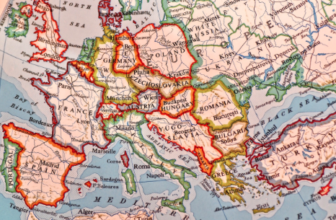
Have you ever stood in the lighting aisle of your local hardware store, completely bewildered by the myriad of bulb socket options?
Don’t sweat it. You’re not alone! Trust me, understanding the different types of bulb sockets can feel like you’re learning a new language. But guess what? It’s a lot less complicated than you might think.
Welcome to our comprehensive guide, where we’ll illuminate (pun totally intended!) everything you need to know about these socket varieties. Let’s turn the light on these confusing terms!
Edison Screw (E)
The Edison Screw, fondly known as “E,” is like the superstar of the bulb socket world. It’s been around for ages, and it’s named after the genius inventor himself, Thomas Edison. Fun fact: did you know that Edison’s original bulb design featured this very socket?
The “E” socket comes in different sizes, denoted by a number following the ‘E.’ For example, E12, E26, E39, you get the gist, right? The number corresponds to the diameter of the bulb base in millimeters. So, an E26 bulb has a base diameter of 26mm.
Bayonet Mount (B)
Next up, let’s talk about the Bayonet Mount, or as the cool kids call it, ‘B.’ This little guy is a staple in many British homes, and it’s as British as it gets – just like fish and chips or the Queen herself! The ‘B’ mount might not have the same universal appeal as our friend the ‘E,’ but it sure does hold its own.
The ‘B’ mount, like the ‘E,’ also comes in varying sizes – B15, B22, B35 and so on. The number, as you might suspect by now, denotes the diameter of the bulb base in millimeters. So, a B22 bulb has a base diameter of 22mm. The ‘B’ type is often found in table lamps, ceiling lights, and other types of decorative lighting in the UK. So, if you are in an old British house and can’t figure out why your light bulb doesn’t fit, you might just be dealing with a ‘B’ type!
Bi-Pin (G)
Moving on, let’s get to know our friend, the Bi-Pin socket, often signified by the letter ‘G.’ You’ll find this one hanging out in halogen bulbs and some types of LED lights. It’s a pretty simple setup – two pins sticking out of the base that gets inserted into matching holes in the socket.
The ‘G’ type also has a number following it, like G4, G9, G12, and so on. Just like our pals, the ‘E’ and ‘B’, the number indicates the distance (in millimeters) between the two pins. So, a G9 bulb will have pins that are 9mm apart. Now, isn’t this a lightbulb moment?
Plug (P)
Say hello to the Plug, or ‘P’ type, which is a bit different from our previous friends. Unlike the other types that primarily focus on screwing or pinning, the ‘P’ type is all about plug and play. It’s like those times when you just want to plug in your headphones and lose yourself in your favorite music.
The ‘P’ type bulb is mainly used for commercial purposes, such as office spaces and high-ceiling stores. It’s super efficient and easy to install – you just push it in and twist. Just like with ‘E,’ ‘B,’ and ‘G,’ the number following ‘P’ indicates the distance between the pins. So, a P13 bulb will have pins that are 13mm apart. Talk about plug-in convenience!
Screw (S)
Now, let’s get down to the nitty-gritty of the Screw, or ‘S’ type. Totally different from our buddy, Edison Screw, the ‘S’ type is usually found in smaller applications, like in the automotive or electronics sector. The good news is, you don’t have to be a mechanic or a tech geek to get a hang of it!
The ‘S’ type, true to its name, involves a simple screw mechanism. You’ll find these predominantly in taillights or dashboard lights in cars. Remember, the number following ‘S’ represents the diameter of the bulb base in millimeters. So, an S8 bulb will have a base that is 8mm in diameter. Lighten up, guys! You’re almost a bulb socket expert now!
Mogul (M)
Another type is the Mogul, or the ‘M’ type. This big boy is the granddaddy of all bulb base types and finds major use in commercial, industrial, and high-intensity lighting applications. The ‘M’ type is often associated with powerful lights that brighten up vast spaces like gymnasiums and expansive outdoor areas.
Just like its counterparts, the ‘M’ type is followed by a number, such as M39 or M77, representing the diameter of the bulb base in millimeters. So, an M39 bulb will have a base that is 39mm in diameter. And with that, congratulations! You’ve just completed a whirlwind tour of the world of bulb sockets.
Intermediate (I)
Meet the Intermediate or ‘I’ type, a middle child in the world of bulb sockets, smaller than the popular ‘E’ type but larger than a tiny ‘S’ type. You’ll find these ‘I’ types popping up in appliances and decorative lighting, where a standard size is just too much, but a small size won’t do. Just like other socket types, the ‘I’ type is followed by a number, such as I15, representing the diameter of the bulb base in millimeters.
Meanwhile, the E17 socket is smaller than the standard E26 but larger than candelabra bases. It is commonly used in appliances, decorative fixtures, and even specialized applications such as chicken heating bulbs for keeping poultry warm in cold seasons.
Candelabra (C)
The Candelabra, or ‘C’ type, is a truly unique member of our bulb socket family. Usually found in small decorative light bulb fixtures and night lights, this delicate socket type is all about bringing a touch of elegance to your lighting. The ‘C’ type comes in different sizes, with the number following the ‘C’ representing the diameter of the bulb base in millimeters – for instance, C7 or C9.
Unraveling the Magic of the Different Types of Bulb Sockets
And there you have it, folks! We’ve journeyed through the different types of bulb sockets, shedding light on each type, from the ubiquitous ‘E’ to the delicate ‘C.’ Just remember, the number after the letter represents the diameter or distance between pins in millimeters.
With this knowledge, may you never find yourself baffled in the lighting aisle again. Happy bulb shopping, and remember, let there be light!
Did you find the information in this article helpful? If so, be sure to check out our blog for more valuable resources.





